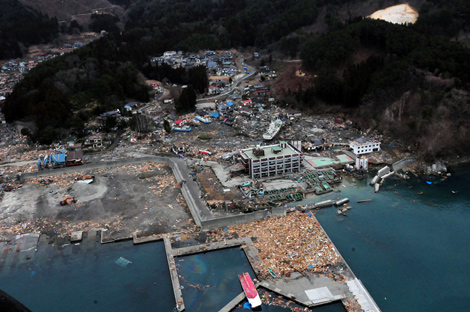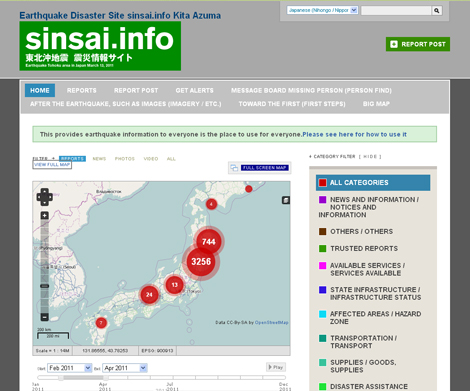Engineers Respond to Disaster in Japan

An aerial view of damage to Wakuya, Japan, after March 11 earthquake and tsunami
Last Friday, Japan was hit with a devastating earthquake of 9.0 magnitude. In combination with the following tsunami, the earthquake caused immense damage to northeastern regions of Japan and severely compromised six nuclear power-plant reactors. Recent reports estimate the death toll at over 5,000, with another 9,000 people missing and 2,500 injured. Over 4 million households were left without electricity, and 1.5 million without running water.
Since the tragedy stuck, scientists and engineers have been working around the clock to find and help survivors, as well as to avert potential nuclear meltdowns.
A team of Japanese programmers have created an interactive map that helps pinpoint places where survivors might still be found, locate food and water supplies, and warn of dangerous or contaminated areas. The program can be updated by anyone with new information, by cellphone or via the web.
A screen shot of the interactive map, with numbers indicating the number of individual reports from each region (taken 03/17/2011)
The map interface is based on open-source software from Ushahidi, a non-profit tech company focused on “information collection, visualization, and interactive mapping.” Originally created to help organize reports of riots and upheaval in Kenya in 2008, the Ushahidi platform has since been used to track information following the recent earthquake in Haiti, map crime reports across the city of Atlanta, and even coordinate New York’s snow removal processes last winter.
Watch this video to learn more about Ushahidi:
On the ground, the IEEE Spectrum reports, at least two disaster relief squads have been issued search-and-rescue robots to help locate survivors among rubble. Two types of robots are being used. One is a 26-foot-long, snake-like device with a camera on the end, useful for slithering through tiny spaces; the other, a small tank-shaped robot called Quince, can nimbly cross uneven terrain.
Like the robotic cockroach we featured last year, devices such as these have great potential to save lives after disaster strikes.
Images via US Navy/Flickr
Filed under: Computer, e-News, Electrical, Environmental, Nuclear
Tags: Computer, Electrical, Environmental, Giving Back, Nuclear, Robotics









